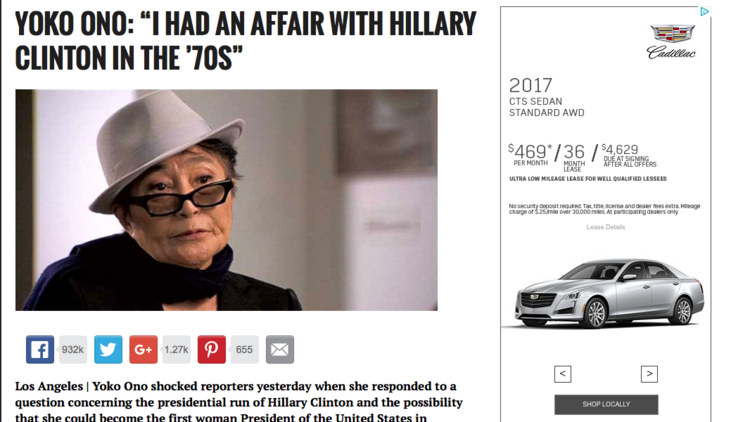Though they may not even realize it’s happening, some well-known brands are inadvertently funding fake news sites.
It looks something like this: A user clicks a sensational or misleading headline and is taken to a page featuring the story with an ad for a big brand’s service or product right next to it. Aside from Alphabet Inc.’s Google, ads from thousands of companies could pop up next to these stories based on a user’s demographics or browsing history, the Wall Street Journal reports.
It’s difficult for brands to know exactly where their ads will appear on a site, as many middlemen are involved and a computer places a different ad on a webpage each time a user clicks on it. And some fake news sites are raking in the cash — some industry insiders say online ads can generate thousands of dollars in monthly revenue.
Adam Berke, president of AdRoll Inc. — which helps companies place online ads — told the Journal that the name of the publisher where an ad will appear isn’t even relayed to them.
Google has said it will no longer place ads on sites with “deceptive” content and is working on implementing a new policy, but many Google-placed ads continue to pop up next to misleading headlines, according to the Journal.
Fake stories have been a hot topic lately after it was discovered that such content was popping up in Facebook News Feeds around the time of the U.S. presidential election. Menlo Park-based Facebook Inc. faced harsh criticism shortly after and has put forward several solutions in following days, such as working with fact-finding organizations and asking users to help weed out false news.
This article first appeared in www.bizjournals.com
Seeking to build and grow your brand using the force of consumer insight, strategic foresight, creative disruption and technology prowess? Talk to us at +9714 3867728 or mail: info@groupisd.com or visit www.groupisd.com

